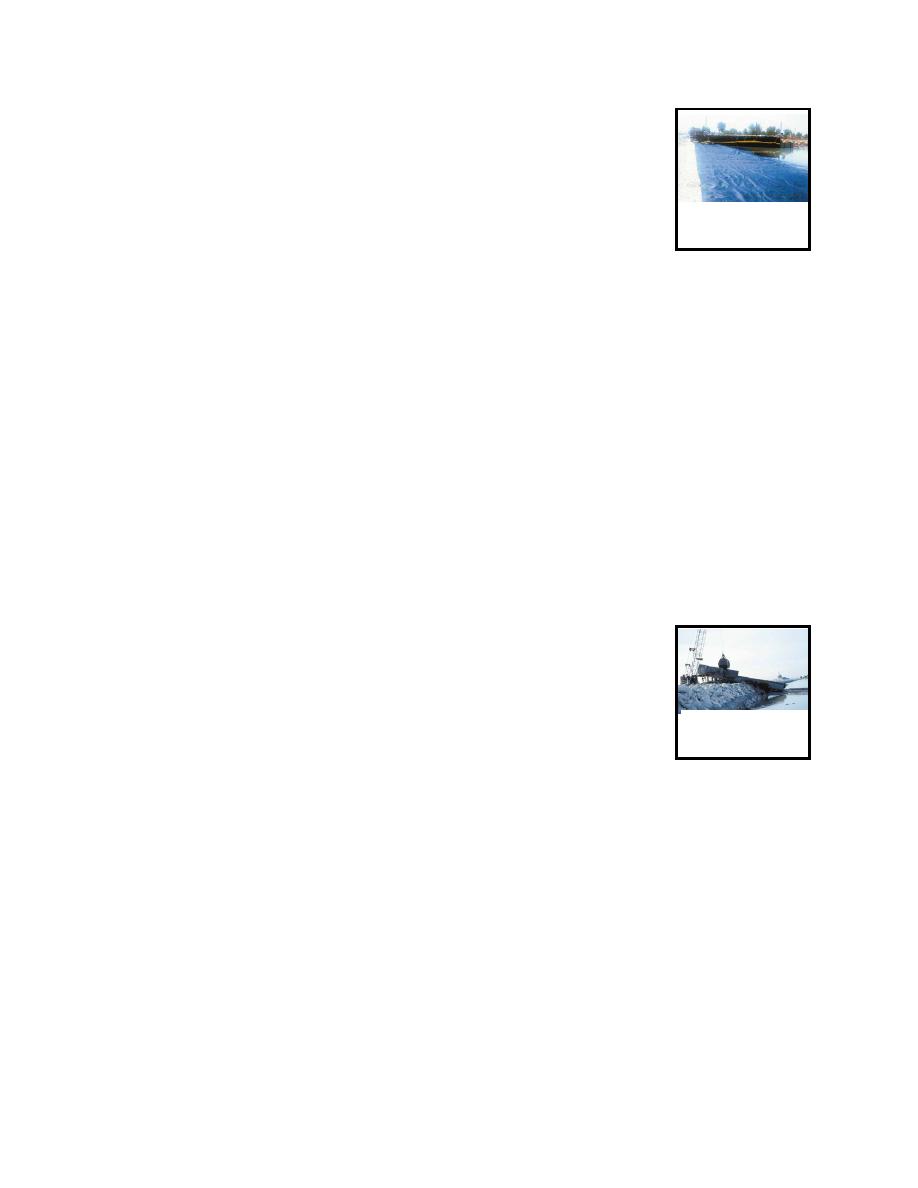 |
||
|
|
||
|
Page Title:
New Bedford Harbor Superfund Liner and Cover |
||
| |||||||||||||||
|
|
 ERDC TN-DOER-C18
August 2000
reinforcement. The sections were heat welded in the field. The membrane
was laid directly on the inside face of the dike using a roller arrangement
mounted on a barge (see Figure 6). As the barge was moved along the inside
face of the dike, the membrane was fed from the roller. Stones were used to
anchor the membrane in place as the work progressed.
To view figure
larger, click here
Observations of fluctuating lake levels during and following construction
indicated that the liner was ineffective in retarding flow of water through the
Figure 6
dike section (there was no appreciable lag in lake water level fluctuations inside
the dike). A dye study showed that the liner was perforated randomly throughout its length due to
tears or punctures during placement. These tears likely resulted from random punctures from the
angular limestone core underneath or the armor stone placed on top of the liner.
Several corrective actions were considered, including grouting and slurry walls. The selected
corrective action was placement of a sand blanket along the inside face of the dike. Sandy material
was excavated directly from the lake bottom within the CDF and placed on the inside dike face at
a 1V on 3H slope. The sand was initially dredged from within the CDF via a small crane barge.
Later, because the sand above the water line was eroded by rainfall, additional sand was hauled in
from an outside source and placed with a "creter crane" from the top of the CDF dike. The creter
crane is a conveyor that could be boomed out over the designated sand fill areas. This equipment,
normally used to place concrete, is mobile and has a large conveyor feed box into which trucks
dumped the sand after backing along the dike to the crane. Following placement of the sand blanket,
comparison of water level fluctuations within the CDF with lake levels indicated that the blanket
was effective in retarding flow through the dikes. Short-term fluctuations were retarded, but the
water level in the CDF followed long-term lake level fluctuations with a lag.
Subsequent to placement of the sand blanket, the Chicago District placed
fine-grained dredged material along the inside face of the dike using a chute
arrangement (Figure 7) to further seal the dike. The dredged material was
To view figure
re-handled from barges using a clamshell and placed on the chute, sliding down
larger, click here
to the inside face of the dike at the water level. As the work progressed, the
chute was moved laterally along the dike until the work was completed.
Figure 7
New Bedford Harbor Superfund Liner and Cover. A 7,600-cu-m CDF with a synthetic liner
and a synthetic cover was used for containment of PCB-contaminated sediments removed from the
"hot spot" of this Superfund site (PCB = polychlorinated biphenyl). The CDF had been previously
constructed along the New Bedford shoreline to contain the contaminated sediments removed during
an earlier pilot study of dredging equipment. The facility was modified and used again during the
hot spot remedial action. The modifications included dividing the facility into three cells to facilitate
the water treatment process, installation of a high density polyethylene geomembrane liner, and
installation of a floating cover over the large cell into which the dredged material was initially
pumped to control volatilization. The purpose of the liner was to contain excess water produced
during hydraulic dredging and leachate during storage of the dredged material. Groundwater
monitoring around the site has not detected any contaminant leakage. The cover for the site was
installed because of concerns over volatilization of PCBs during filling. Dredged material was
7
|
|
Privacy Statement - Press Release - Copyright Information. - Contact Us - Support Integrated Publishing |